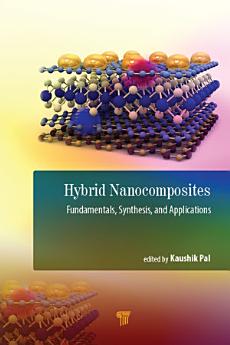Hybrid Nanocomposites: Fundamentals, Synthesis, and Applications
Información sobre este eBook
Understanding surfaces and interfaces is a key challenge for those working on hybrid nanomaterials and where new imaging and analysis spectroscopy/electron microscopy responses are vital. The variability and site recognition of biopolymers, such as DNA molecules, offer a wide range of opportunities for the self-organization of wire nanostructures into much more complex patterns, while the combination of 1D nanostructures consisting of biopolymers and inorganic compounds opens up a number of scientific and technological opportunities. This book discusses the novel synthesis of nanomaterials and their hybrid composites; nanobiocomposites; transition metal oxide nanocomposites; spectroscopic and electron microscopic studies; social, ethical, and regulatory implications of various aspects of nanotechnology; and significant foreseeable applications of some key hybrid nanomaterials. The book also looks at how technology might be used in the future, estimating, where possible, the likely timescales in which the most far-reaching applications of technology might become a reality. Current research trends and potential future advances, such as nanomaterials, nanometrology, electronics, optoelectronics, and nanobiotechnology, are discussed, in addition to the benefits they are currently providing in the short, medium, and long terms. Furthermore, the book explains the current and possible future industrial applications of nanotechnology, examines some of the barriers to its adoption by industry, and identifies what environmental, health and safety, ethical, or societal implications or uncertainties may arise from the use of the technology, both current and future.
Acerca del autor
Kaushik Pal is a research professor at the Nanotechnology Lab, Bharath University, Tamil Nadu, India. He received his PhD in soft condensed matter physics from the University of Kalyani, West Bengal, India. For several months, he worked with the Brain Korea Project and was a visiting scientist at the National Research Foundation, South Korea. He was also appointed as senior postdoctoral fellow as well as scientist and faculty fellow by the Chinese Academy of Science Foundation, China. Professor Pal supervises and guides many undergraduate and graduate students as well as postdoctoral scholars in several countries. He has authored 50 research articles and 3 review articles in international peer-reviewed journals, as well as 8 book chapters. He has won several prestigious awards, including the Marie Curie Experienced Researcher Postdoctoral Fellowship offered by the European Commission in Greece.






